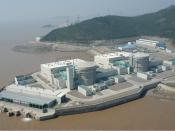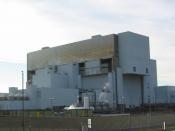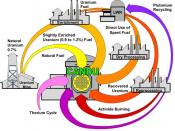1. List 10 different uses for radioactive isotopes.
Medical uses:1)Used for treatment of hematopoietic forms of tumours2)Used for the sterilisation of syringes and other medical equipmentUses in food preservation:3)Used to halt the sprouting of root crops after harvest4)Used to kill parasites and pests5)Used to control the ripening of fruits and vegetablesUses in mining and industry:6)Used to examine welds and detect leaks7)Used to study the rate of wear and corrosion of metals8)Used for analysis of minerals and fuelsEnvironmental uses:9)Used to trace and analyze pollutants10)Used to study the movement of surface water and to measure precipitation runoffs2. Briefly describe three different nuclear reactor/designs.
1)Light Water Reactor (LWR) - In this reactor design, light water (ordinary water) is used to both cool the reactor and act as a neutron moderator (a medium which reduces the speed of fast neutrons). This is the most widespread design in the world, and most nuclear power plants are of this type.
The two most common types of LWRs are pressurized water reactors and boiling water reactors.
2)Heavy Water Reactor (HWR) - In this design, heavy water is used as a moderator and coolant. Heavy water is composed of Hydrogen-2 atoms, or hydrogen isotopes with a mass number of 2. Because heavy water is a much better moderator that light water, the natural uranium can be used. The Canadian CANDU reactor is an example.
3)Gas Cooled Reactor (GCR) - In this design, graphite is used as the moderator and gas (usually carbon dioxide or helium) as the coolant. This is a very old design and such reactors are no longer constructed. The first GCR was the Calder Hall power plant built in Britain in 1955.
Bibliography"Gas Cooled & Advanced Gas Cooled Reactors." 24 Dec. 2005. Nuclear Tourist. 15 Sept. 2007 .
"Heavy Water." 31 Jan. 2006. Queens...


